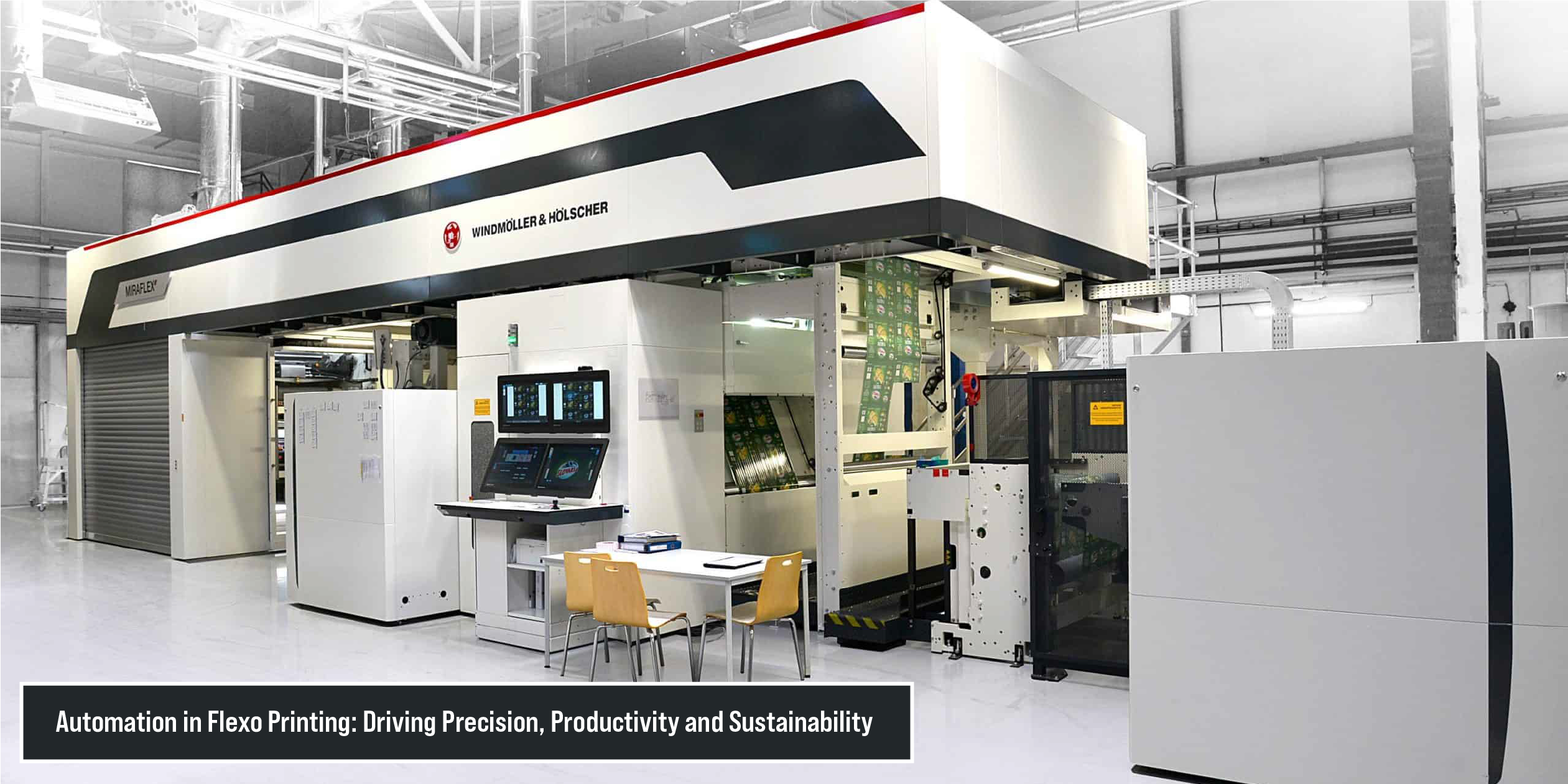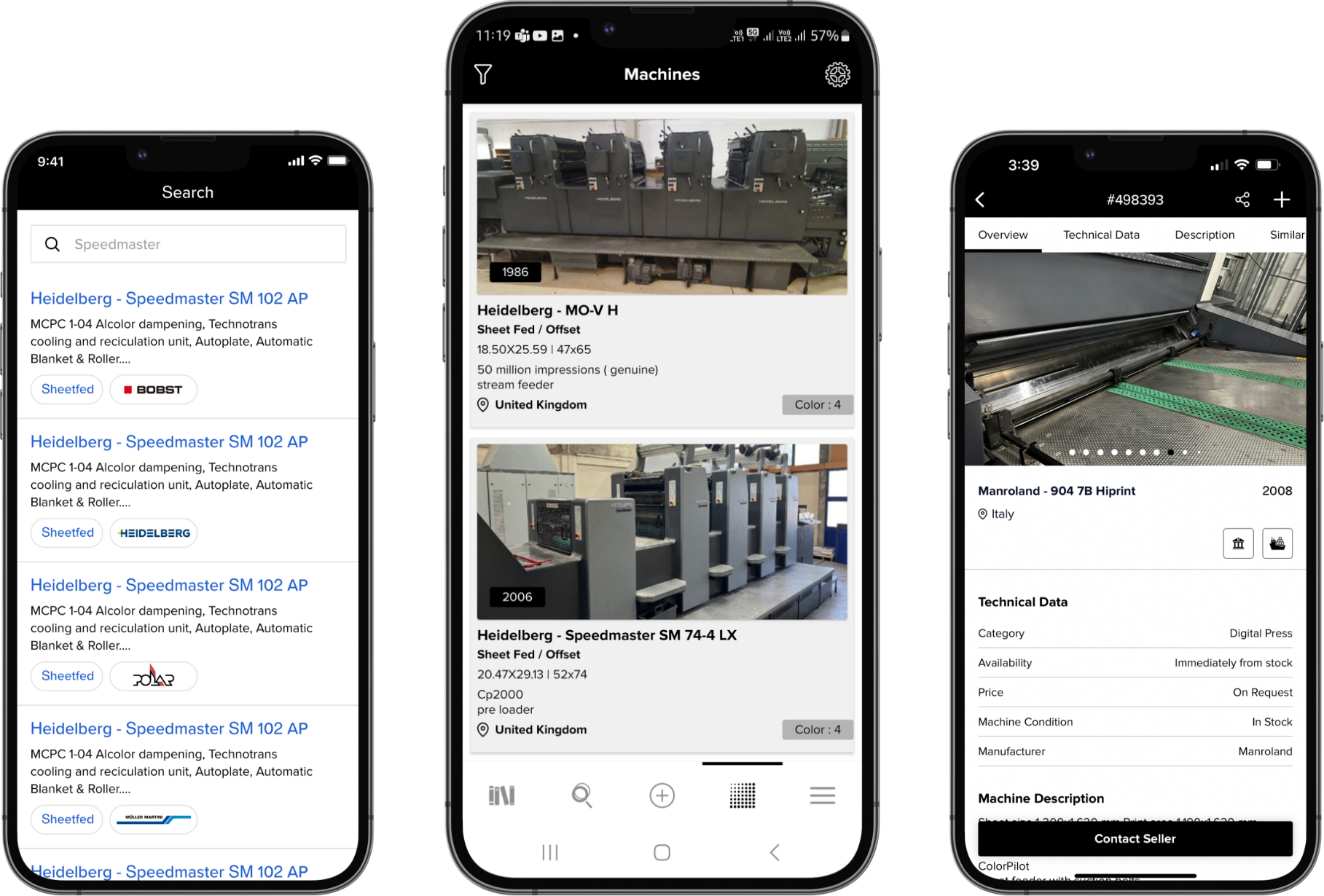21/03/2025
Automation in Flexo Printing: Driving Precision, Productivity and Sustainability
Automated flexo printing solutions offer significant sustainability benefits by reducing material waste, energy consumption, and downtime, thereby enhancing productivity and quality.

Flexography (flexo) printing has long been a cornerstone of the packaging industry, valued for its versatility, cost-effectiveness, and ability to handle diverse substrates. However, as brands demand shorter runs, faster turnarounds, and higher customization, the industry has turned to automation to overcome challenges like labor shortages, inconsistent quality, and production inefficiencies. This article explores how automation is revolutionizing flexo printing, from prepress to post-press workflows.
The Need for Automation in Flexo Printing
Challenges Driving Automation
Shorter Job Runs: Brands increasingly require small-batch, customized packaging, making rapid job changes essential.
Labor Shortages: A shrinking pool of skilled press operators necessitates systems that simplify complex tasks.
Quality Demands: Consumers expect flawless prints, driving the need for precision and consistency.
Sustainability Pressures: Reducing waste (ink, substrate, energy) is critical for cost savings and environmental compliance.
The Role of Industry 4.0
Industry 4.0 principles—data integration, IoT connectivity, and cloud computing—are transforming flexo presses into "smart" systems. By automating workflows, printers can minimize human error, optimize resource use, and achieve real-time monitoring.
Key Automation Technologies in Flexo Printing
Automated Plate Mounting
Problem: Manual plate mounting is time-consuming and prone to errors, leading to misregistration and waste.
Solution:
RFID and Cloud Integration: Plate sleeves embedded with RFID chips store registration and impression data, which is retrieved automatically during mounting.
Camera-Guided Systems: Image recognition software ensures plates are positioned accurately, reducing setup waste by up to 30%.
Impact:
Reduces plate mounting time by 50%.
Eliminates setup waste for short runs.
Intelligent Job Changeovers
Problem: Traditional changeovers require skilled operators and cause downtime.
Solution:
Step-by-Step Guides: Press interfaces guide operators through changeovers in the correct sequence, reducing errors.
Automated Tension and Registration Adjustments: Sensors auto-adjust web tension and print pressure based on pre-set job data.
Impact:
Cuts makeready time by 40–60%.
Enables less-experienced staff to manage complex tasks.
Cloud-Based Intelligent Parameters
Problem: Inconsistent parameters across jobs lead to quality issues.
Solution:
Centralized Job Data: Cloud systems store ink settings, plate topography, and tension parameters for each job, ensuring uniformity.
Predictive Analytics: Algorithms recommend optimal settings for substrates and designs, minimizing trial runs.
Impact:
Reduces ink consumption by 15–20%.
Accelerates onboarding of new operators.
Automated Defect Detection
Problem: Manual inspection misses subtle defects, leading to reprints.
Solution:
Vision Systems: High-resolution cameras detect flaws like misregistration or ink splatter in real time.
Closed-Loop Correction: Defect data triggers automatic adjustments to ink flow or registration.
Impact:
Lowers waste by approx. 25%.
Ensures compliance with brand quality standards.
Hybrid Flexo-Digital Workflows
Problem: Pure flexo struggles with ultra-short runs and variable data.
Solution:
Hybrid Presses: Combine flexo stations with inkjet modules for spot colors, coatings, and variable data.
Example: Mark Andy’s Digital Series HD achieves 93% Pantone gamut coverage using CMYK+ inks and flexo enhancements.
Impact:
Enables cost-effective runs as low as 500 labels.
Supports on-demand customization.
Future Trends in Flexo Automation
- Artificial Intelligence and Machine Learning
The integration of AI and machine learning technologies promises to take flexo automation to new levels. These technologies enable predictive maintenance, automated decision-making, and continuous process optimization.
- Internet of Things (IoT) Integration
IoT connectivity allows for comprehensive monitoring of all press components and production metrics, enabling data-driven decision-making and remote management capabilities.
- Increased Integration with Digital Printing
Hybrid printing systems that combine flexo and digital printing technologies are gaining popularity, offering the flexibility to produce variable data prints economically.
Looking ahead, the future of flexo printing lies in embracing new technologies and innovative solutions that enhance efficiency and quality. As brands continue to demand faster turnaround times and greater customization, printers must leverage automation to stay competitive in the market. By investing in automated systems and embracing Industry 4.0 principles, flexo printers can unlock new opportunities for growth and innovation in the years to come.
FAQs
How does automation improve print consistency?
Automated systems use predefined recipes and real-time adjustments to maintain color accuracy and registration, even with less-skilled operators.
Can small printers afford automated flexo systems?
Yes. Retrofit solutions (e.g., RFID plate systems) and SaaS-based software (e.g., Esko Flexo Engine) offer scalable, cost-effective entry points.
Is automation only viable for large printing operations?
No, automation solutions exist for printers of all sizes. Smaller operations can often benefit significantly from targeted automation in high-impact areas such as prepress workflows or inspection systems.
How does automation impact sustainability in flexo printing?
Automation typically reduces waste, lowers energy consumption, and optimizes material usage, all contributing to more sustainable printing operations.
We at Machine Dalal have a wide selection of print, packaging and converting machines listed with us. Industry sellers from all over the world list their print equipment with us to reach interested buyers who regularly visit our platform to find equipment that matches their needs.
Machine Dalal is the global trading platform for the printing, packaging, and converting industry—designed to evolve with the needs of the market. We are continually innovating - from powerful search tools to integrated social media marketing, a growing newsletter audience, and our newly launched digital magazine, we are building a robust ecosystem to support print machinery sellers and buyers worldwide.
For a more personalized experience, download our mobile apps on Android and iOS.
To explore business opportunities or partnerships, feel free to get in touch with us.
The World of Print at your Fingertips
The Machine Dalal Mobile Apps
Download our Machine Dalal App Regular updates from our magazine with illustrations, innovations , commodities, history, media, art and a whole lot more from the magnificent world of Print.
Get the App

 Login
Login


